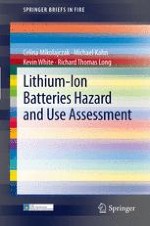2011 | OriginalPaper | Buchkapitel
2. Lithium-Ion Technology Applications
verfasst von : Celina Mikolajczak, Michael Kahn, Kevin White, Richard Thomas Long
Erschienen in: Lithium-Ion Batteries Hazard and Use Assessment
Verlag: Springer US
Aktivieren Sie unsere intelligente Suche, um passende Fachinhalte oder Patente zu finden.
Wählen Sie Textabschnitte aus um mit Künstlicher Intelligenz passenden Patente zu finden. powered by
Markieren Sie Textabschnitte, um KI-gestützt weitere passende Inhalte zu finden. powered by
